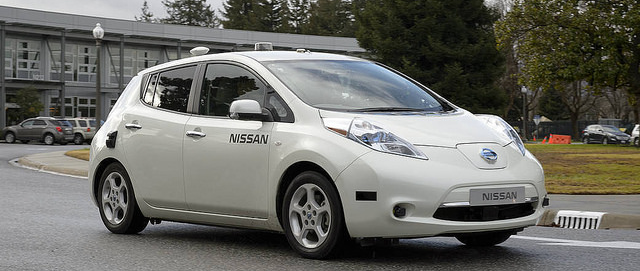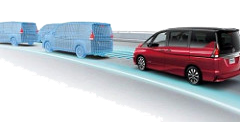
How Soon Will Driverless Cars Get Here — And What Should Dealers Do About It?
Autonomous vehicles are poised to be the biggest transformation in transportation since Ford’s Model T.
If you work in the automotive industry like I do, that thought can be a little unnerving. Driverless cars will almost definitely become a significant part of society in our lifetime, but what form will that take? What do autonomous vehicles mean for auto dealerships? And how soon will driverless cars be our reality?
The first thing to understand is that driverless vehicles are already here. There are at least 33 corporations pursuing the tech, and companies like Uber have already put them on the road in concentrated markets.
We picked out the main handful of companies expected to make big driverless waves »
Autonomous vehicles likely won’t be taking over the majority of driving in 2017 or even 2018. There are several concerns that still need to be addressed.
However, in an interview with the Verge, current United States Secretary of Transportation Anthony Foxx predicts, “By 2021, we will see autonomous vehicles in operation across the country in ways that we [only] imagine today.”
Your Last Manual Vehicle
So what does this mean for the auto industry as we know it?
For a lot of your customers, the next vehicle they purchase could very well be the last one they drive home themselves. Giants like Tesla Motors, Audi, Volvo, General Motors, Google, and Uber are all chasing commercialization of autonomous vehicles and are likely to introduce their first models in a matter of years.
That said, here are a few of the things that need to be figured out before we hand over the wheel to machines.
But Before Buying Your First Driverless Car…

Image: Automobile Italia on Flickr
Advancing the Tech
As close as we are, driverless cars aren’t ready yet — at least, not in a way that can go live throughout the market.
For one thing, GPS quirks need to be hammered out for these vehicles to navigate unaided. (I still have to tell anyone visiting my parents’ home that the Apple Maps directions are right . . . up until the last five minutes.)
And with so many different companies pursuing autonomous models, what standards need to be created? The ideal scenario would be that all driverless vehicles will be linked in order to share information about potholes, traffic, accidents, and more — but will corporations collaborate in that way?
Even if they do, we’re talking about an incredible amount of data being exchanged. What bandwidth should be used, and who will pay for it?
Also, some sensors have been thrown off by weather or direct sunlight — and they might not recognize that a ball in the street could mean a child is near, the same way a person would. Plus, any hardware or software malfunctions would have bigger consequences than annoyingly waiting for Gilmore Girls to buffer.
But the simple solution here is that the technology will keep getting better, and some of the best tech minds in the country are on it.
What else might hold up getting your personal Knight Rider?
Changing the Transportation Game

Image: Ned Vizzini on Flickr
As Secretary Foxx outlines, autonomous vehicles could mark a significant shift in how we approach travel.
In heavily populated areas, a fleet of low-cost Uber taxis could strike the perfect balance between the convenience of mass transit and the convenience of having your own car.
Because driverless vehicles will likely be able to drive closer together, travel time will be optimized. We might even start seeing homes built without garages (or at least, not garages as we know them).
But in order for all of us to be won over by these positive changes, we’ll need to be convinced. Which brings us to . . .
Quelling General Apprehension
People have considerable fear about driverless cars.
Have you ever heard about the elderly couple who won $1,750,000 from Winnebago in court? Commonly featured in lists of outrageous lawsuits, the story goes that their RV overturned when the driver activated cruise control — and then calmly left the wheel to make a sandwich in the back.
Though the story isn’t true, the tall tale is believable because the idea of letting your car do the driving is so counterintuitive to us.
On top of our unease at playing backseat driver from the driver’s seat, people have plenty of doubts about the technology. If you’ve ever cussed out Siri or been baffled by your smart TV, you might share in the concern that the tech won’t be truly ready when it hits the market.
Plus, Americans are conflicted about how driveless cars should behave. Though it’s likely they could prevent 90% of auto accidents in the U.S., surveys show we’re nervous about hypothetical “runaway trolley scenarios,” in which the vehicle might have to choose between saving passengers or sparing passerby.
So plenty of effort will be needed to win the public’s confidence.
What Dealerships Should Think About
Take a breath — you have a little time. Driverless vehicles probably won’t become fully for about five years, so it’s not like you need to rush and prepare your resume.
But still — how will driverless vehicles affect dealerships?
It’s still unclear what effect autonomous vehicles will have on the way we sell cars. Certainly, changes will be coming. The dealerships that are willing to adapt will be the ones that survive the transportation evolution that is approaching.
My advice? Get in contact with your OEM, and ask if they’re pursuing autonomous technology. If they aren’t, it’s worth wondering whether they’ll be able to catch up to the brands that are.
The auto dealership industry is responsible for more than a million jobs, but we will have to make adjustments in order to keep the industry moving.
In the meantime, 9 Clouds will continue to cover how autonomous vehicles will affect auto dealers, so please subscribe to our blog to keep informed.


![Human vs AI A/B Test [Spoiler Alert: Humans Win!]](https://9clouds.com/wp-content/uploads/2024/02/Volvo-dealership-1-600x388.png)


